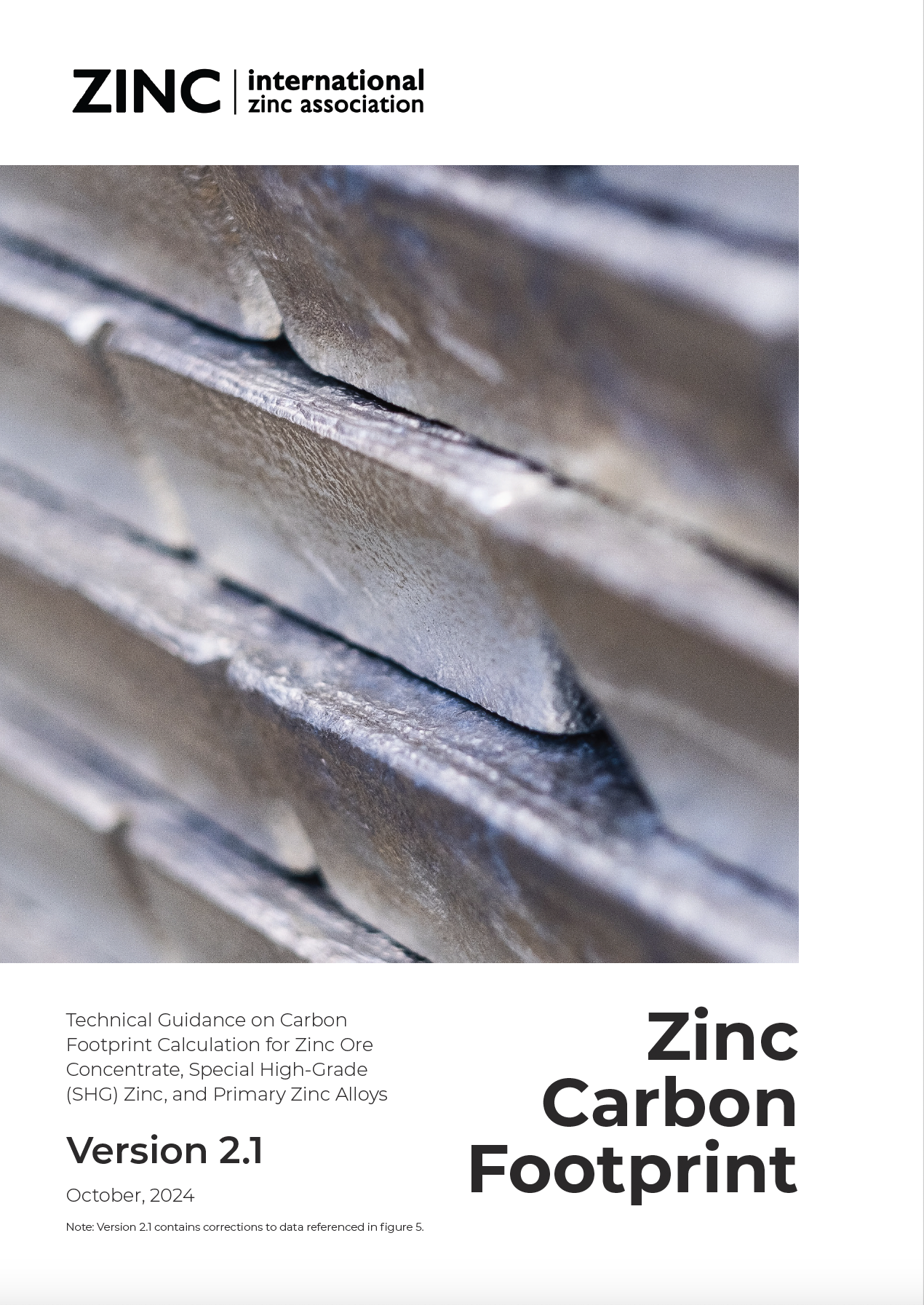Carbon Footprint Guidance
INTRODUCTION
The carbon footprint has become an instrument for regulators limiting and reversing climate change effects. Increasingly investors base decisions on carbon footprint information. Designers decide on materials no longer based on costs alone but also on carbon footprint information while users demand transparent and credible information on greenhouse gas emissions associated with a product.
Existing methodologies for calculating the carbon footprint for metals such as ISO 14040 and 14044 or the Product Life Cycle Accounting and the Reporting Standard by Greenhouse Gas Protocol still bear room for interpretation when applying it to zinc metal production resulting in loss of transparency and credibility.
This document provides practical guidance on calculating the carbon footprint for special high-grade (SHG) zinc. The guidance was developed through a thorough process of reviewing existing methodologies, applied industry expertise, and preserving compliance with ISO 14040 and 14044, as well as with the Product Life Cycle Accounting and Reporting Standard by Greenhouse Gas Protocol.
This guidance is intended for use for product carbon foot-printing of SHG zinc e.g., when reporting to the LME passport.
Supporting Documents
Technical Guidance on Carbon Footprint Calculation for Special High-Grade Zinc - Version 2.1

